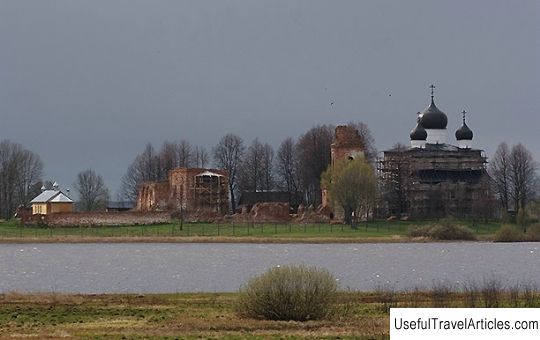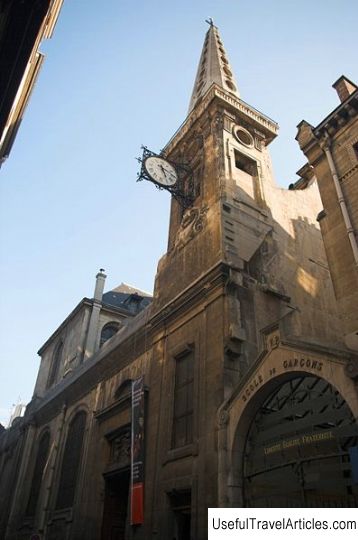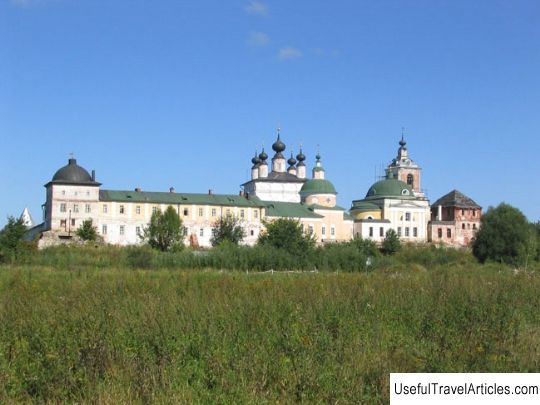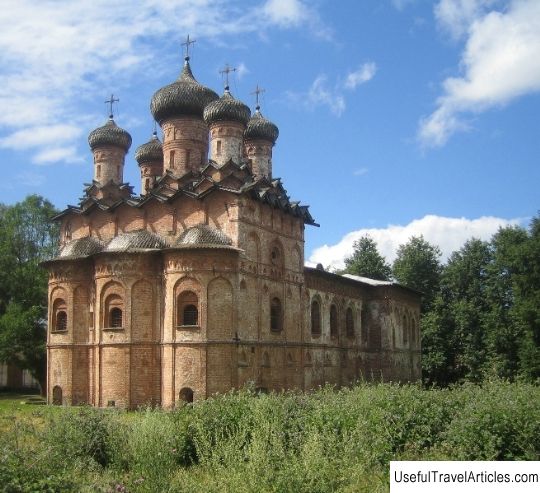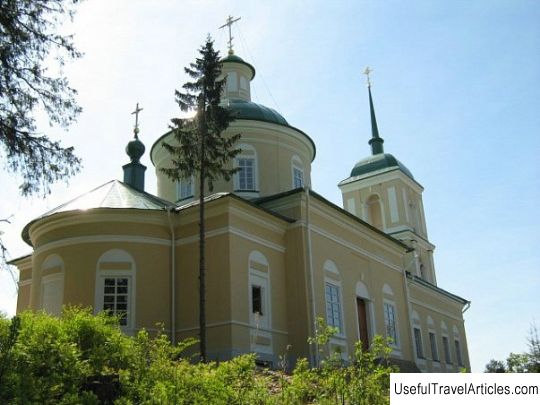Cathedral of the Life-Giving Trinity of the Holy Trinity Michael-Klopsky Monastery description and photo - Russia - North-West: Novgorod region
Rating: 8,2/10 (1543 votes) 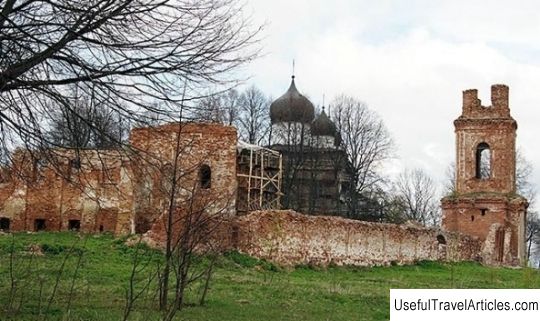
Cathedral of the Life-Giving Trinity of the Holy Trinity Michael-Klopsky monastery description and photos - Russia - North-West: Novgorod region. Detailed information about the attraction. Description, photos and a map showing the nearest significant objects. Photo and descriptionAs you know, the Novgorod architecture, dating back to the first half - the middle of the 16th century, largely retained its connection with the architectural and construction tradition that developed in the era of independence, namely in 1478. In addition, at this moment the long-awaited annexation of Novgorod to Moscow took place, which could not but affect the architectural component of this union. The novelty was discovered, first of all, in the Trinity Cathedral, located in the Klop monastery. A new architectural style was revealed in the brickwork of the Trinity Cathedral, which led to the emergence of new types of cathedrals. In addition, the decoration has undergone significant changes for the better. Of all the representatives of the existing architectural style of Novgorod and Moscow, the Trinity Cathedral has become the most remarkable. Earlier in its place was the wooden Trinity Church, erected in 1412. There is an assumption that at this time the Holy Trinity Monastery already took place. The wooden building lasted only seven years. In 1419, on the site of the wooden church, a new stone church was erected, the construction of which took place during the life of Hegumen Theodosius. In the chronicle data, a special functional feature of the Trinity Church is clearly noted - it is the presence of a sub-church, which was associated with the orientation toward the Nikolskaya Church on Lyatka. In 1569, the stone Trinity Church was dismantled, and a large beautiful Trinity Cathedral was built in its place. It was a four-pillar temple with three apses, the main volume of which was completed with three chapters, which was also presented in the Transfiguration Cathedral at the Khutynsky monastery. In the general architecture of the Trinity Cathedral, the traditional features of Novgorod architecture are almost completely absent. The cathedral building is made in a rather original volumetric form, which is associated with the porch, made across the entire width of the facade located on the western side, as well as two aisles from the south and north. The significant asymmetry of the overall composition is strengthened to a greater extent by the hipped-roof bell tower located in the south-western side of the building. One of the features of the Trinity Monastery is the multi-seat of the Trinity Church, which is typical for a number of churches dating back to the time of the Klopsky Cathedral ... In this aspect, the Church of Nikita is the closest to the Trinity Cathedral. As for the process of consecrating church chapels, then the ceremony was held with the participation of Ivan the Terrible, since the cathedral was built exclusively by order of the tsar and largely at his expense. The side-altars were consecrated in honor of Theodore Stratilates and John Climacus, which was the result of the author's desire to emphasize the patronage of the tsar's sons - Fedor and John. The most significant changes in the structure of the building were closely related to the renovation work in the early 19th century. The cathedral walls were somewhat overlaid and a new covering was made, while a small part of the main volume was supplemented by a pair of decorative chapters. In addition, the vaults of the chapels and chapters were dismantled, the bell tower was removed, and the wall paintings dating back to the late 17th and early 18th centuries were significantly renewed. At about the same time, brotherly cells, abbot's chambers were built, a three-tiered bell tower, as well as a stone fence. During 1964-1965 under the leadership of the chief architect Krasnorechiev L.V. conservation work took place in the Trinity Cathedral. To date, in the interior of the cathedral, namely at a depth of 1.2 m from the floor, researchers have discovered original masonry, which is very different from the masonry of the 16th century. Several facial surfaces were found in the revealed masonry; there is an assumption that this masonry is a remnant of the previously existing internal support of the temple in 1419. On the east side of the temple, masonry was found identical to the previously found masonry, although only one row of limestone was preserved from it. On the north side of the side facet, the front coating has been preserved to this day. Restoration work is underway in the cathedral.       We also recommend reading Tsminda Sameba (Holy Trinity Cathedral) description and photos - Georgia: Tbilisi Topic: Cathedral of the Life-Giving Trinity of the Holy Trinity Michael-Klopsky Monastery description and photo - Russia - North-West: Novgorod region. |
